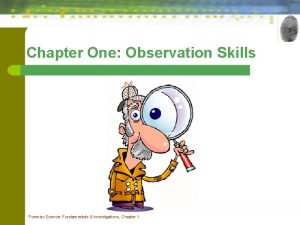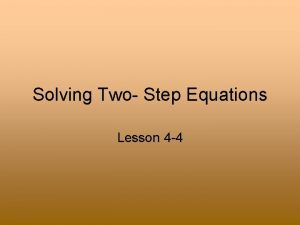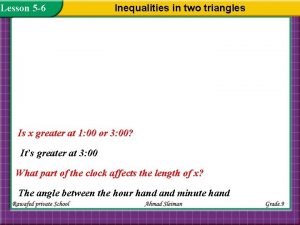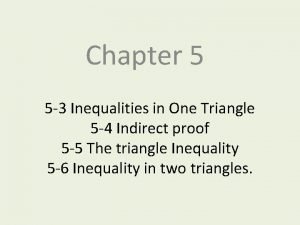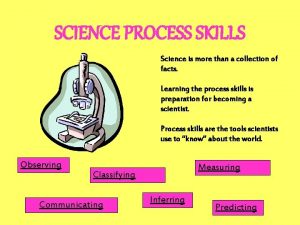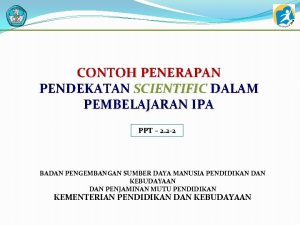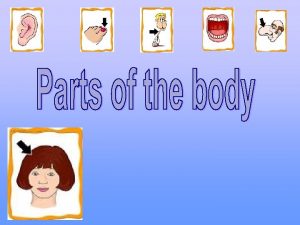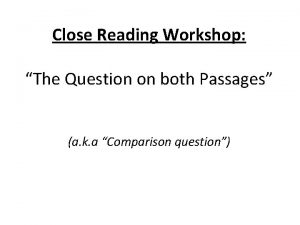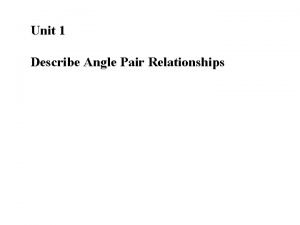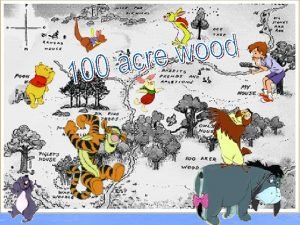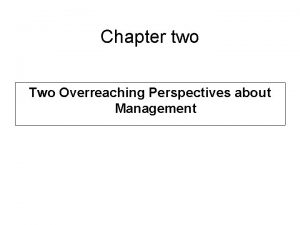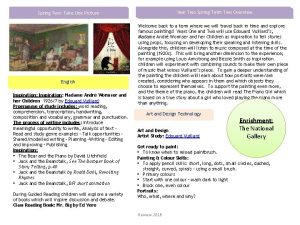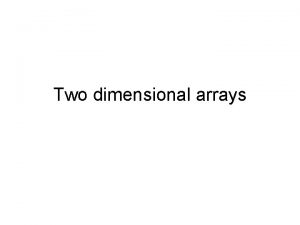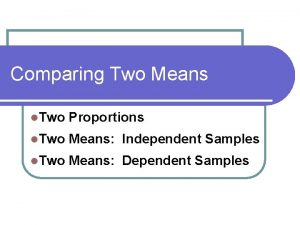SCIENCE SKILLS Chapter Two Science Skills 2 1







































- Slides: 39

SCIENCE SKILLS

Chapter Two: Science Skills Ø 2. 1 Mass and Volume Ø 2. 2 Density Ø 2. 3 Graphing Ø 2. 4 Solving Problems

2. 1 Measuring mass ØMass describes the amount of matter in an object. ØThe SI unit for mass is the kilogram (kg). ØThe kilogram is too large a unit to be convenient for small masses. One gram (g) is one-thousandth of a kilogram. What is the estimated mass of ONE zinc nut?

2. 1 Matter ØMatter is anything that has mass and takes up space. ØAll matter has mass. ØSteel, plastic, rubber, and glass are different kinds of matter. A car has a lot more of each kind of matter than a bike.

2. 1 Mass and weight are different Ø We tend to use the terms mass and weight interchangeably, but they are not the same thing. Ø Mass is the amount of matter in an object. Ø Weight is a measure of the pulling force of gravity on an object.

2. 1 Mass and weight are different Ø A 2. 3 kg bag of flour has a mass of 2. 3 kilograms no matter where it is in the universe. Ø The weight of the bag of flour is less on the moon. The 5 lb bag of flour on Earth weighs only. 8 lbs on the moon!


2. 1 Volume ØVolume is the amount of space an object takes up. ØThe fundamental unit of volume in SI is the cubic meter (m 3). ØMore convenient smaller units are cubic centimeters (cc or cm 3), liters (L) and milliliters (m. L).

2. 1 Volume ØMeasuring the volume of liquids is easy. ØPour the liquid into a graduated cylinder and read the meniscus at eye level.

2. 1 Displacement ØYou can find the volume of an irregular shape using a technique called displacement. ØPut the irregularly shaped object in water and measuring the amount of water displaced.

2. 1 Comparing mass and volume ØMass and volume are two different properties of matter. ØSize does not always indicate an object’s mass! ØHow the matter is packed into space is more important.

2. 2 Density ØDensity describes how much mass is in a given volume of a material.

2. 2 Density ØSolids, liquids and gases are matter, so they all have density. ØThe density of water is about one gram per cubic centimeter.

2. 2 Density ØThe units used for density depend on whether the substance is solid or liquid. Ø For liquids use units of grams per milliliter (g/m. L) Ø For solids use density in units of g/cm 3 or kg/m 3.


2. 2 Density of common materials ØDensity is a property of material independent of quantity or shape.

2. 2 Density of common materials ØLiquids tend to be less dense than solids of the same material. Ø Ex. solder (“sodder)

2. 2 Density of common materials ØWater is an exception to this rule. ØThe density of solid water (ice) is less than the density of liquid water.

2. 2 Determining Density Ø To find the density of a material, you need to know the mass and volume of a solid sample of the material. 1. Mass is measured with a balance or scale. 2. Use the displacement method or calculate the volume.

2. 2 Density changes for different substances because: 1. Atoms have different masses. 2. Atoms may be “packed” tightly or loosely.


Solving Problems Calculating Density 1. Looking for: Ø …the density of the candle 2. Given: Ø …mass = 1500 g; volume = 1700 m. L 3. Relationship: Ø D = m/V 4. Solution: Ø 1, 500 g ÷ 1, 700 m. L = 0. 8823529 g/m. L # Sig. fig =. 88 g/m. L

2. 3 Graphing Ø A graph is a visual way to organize data. Ø A scatterplot or XY graph is used to see if two variables are related.

2. 3 Graphing Ø A bar graph compares data grouped by a name or category.

2. 3 Graphing Ø A pie graph shows the amount each part makes of up of the whole (100%).

2. 3 Graphing Ø A “connect-the-dots” line graph is often used to show trends in data over time.

2. 3 How to make an XY graph ØScatterplots show a change in one variable influences another variable. ØThe independent variable is the variable you believe might influence another variable. ØThe dependent variable is the variable that you hope will change as a result of the experiment.

2. 3 How to make an XY graph ØPressure is critical to safe diving. ØHow does an increase in depth affect the pressure? ØWhat sort of graph would best show the relationship between pressure and depth?

2. 3 How to make an XY graph 1. Choose x and y-axis Ø Depth is the independent variable = x axis Ø Pressure is the dependent variable = y axis 2. Make a scale Ø Most graphs use ones, twos, fives or tens Ø OR calculate the value per box 3. Plot your data 4. Create a title * Exception- when time is a variable


2. 3 Identifying graph relationships ØIn a direct relationship, when one variable increases, so does the other. The speed and distance variables show a direct relationship.

2. 3 Identifying graph relationships ØWhen there is no relationship the graph looks like a collection of dots. No pattern appears.

2. 3 Identifying graph relationships ØIn an inverse relationship, when one variable increases, the other decreases.

2. 3 Reading a graph What is the speed of the car at 50 cm? 1. Find the known value on the x axis Ø Position = 50 cm 2. Draw a line vertically upward from 50 cm until it hits the curve. 3. Draw a line across horizontally to the yaxis from the same place on the curve. 4. Read the speed using the y axis scale. Ø Speed = 76 cm/s

2. 4 Solving Problems


Solving Problems Calculate marble’s volume & density 1. Looking for: Ø volume, then density 2. Givens: Ø mass = 6 g , water displaced 30 to 32 m. L 3. Relationships: Ø water displaced = marble volume, D = m/V 4. Solution: Ø 32 m. L – 30 m. L = 2 m. L Ø D = 6 g / 2 m. L = 3 g/m. L

2. 4 How to solve design problems ØUse what you know to design a solution that solves the problem. ØUnlike “formula problems, ” design problems have many correct solutions. ØThe solutions are only limited by your creativity, ingenuity, skill, and patience.

2. 4 How to solve design problems ØWhat does your design need to accomplish? ØWhat constraints do you have? ØThink of an idea. ØFollow the design cycle…
 My favorite subject is math
My favorite subject is math Forensic science chapter 1 observation skills answers
Forensic science chapter 1 observation skills answers Intrapersonal skills example
Intrapersonal skills example Soft skills vs hard skills
Soft skills vs hard skills Ontario skills passport essential skills
Ontario skills passport essential skills Chemistry the central science 14th edition
Chemistry the central science 14th edition Faceing math lesson 4 solving two step equations
Faceing math lesson 4 solving two step equations Graphing inequalities
Graphing inequalities Hinge theorem activity
Hinge theorem activity Inequalities for two triangles 6-5
Inequalities for two triangles 6-5 5-3 inequalities in one triangle
5-3 inequalities in one triangle Scientific skills in science
Scientific skills in science Science process skills definition
Science process skills definition Science skills olympics
Science skills olympics Paragraph on scientist
Paragraph on scientist Science process skills communicating
Science process skills communicating Predicting science process skills
Predicting science process skills Ppt keterampilan proses ipa di sd
Ppt keterampilan proses ipa di sd Two nonadjacent angles formed by two intersecting lines
Two nonadjacent angles formed by two intersecting lines 2 hands go
2 hands go Osha 29cfr1910.134
Osha 29cfr1910.134 Two + two four cryptarithmetic solution
Two + two four cryptarithmetic solution Which two points do the two passages agree on?
Which two points do the two passages agree on? Describing congruent angle relationships
Describing congruent angle relationships When two curves coincide the two objects have the same
When two curves coincide the two objects have the same Identify a key term used in both passages.
Identify a key term used in both passages. Two nonadjacent angles formed by 2 intersecting lines
Two nonadjacent angles formed by 2 intersecting lines Two beer or not two beer shakesbeer
Two beer or not two beer shakesbeer Summary of act 2 scene 1 hamlet
Summary of act 2 scene 1 hamlet Two witches were watching two watches
Two witches were watching two watches Contingency table in statistics
Contingency table in statistics The two terms of comparison in the first two quatrains are
The two terms of comparison in the first two quatrains are Which witch watches which watch
Which witch watches which watch Two beer or not two beer shakesbeer
Two beer or not two beer shakesbeer Macbeth and king duncan relationship
Macbeth and king duncan relationship Social science vs natural science
Social science vs natural science What are the main branches of natural science
What are the main branches of natural science Natural science vs physical science
Natural science vs physical science Applied science vs pure science
Applied science vs pure science Natural science and social science similarities
Natural science and social science similarities

